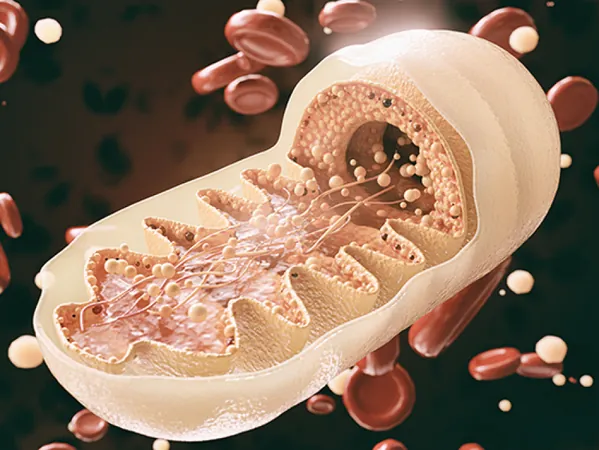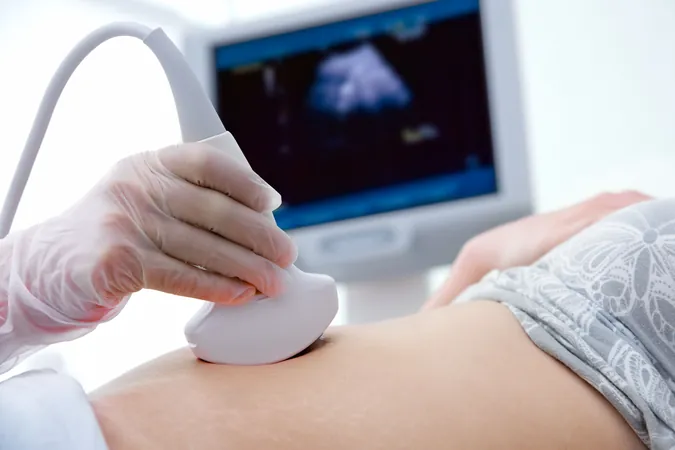
Unraveling the Mysteries of Mitochondrial Transfer: A Game-Changer in Medical Research!
2025-01-27
Author: Arjun
Introduction
Mitochondria, the powerhouse organelles found in nearly all animal, plant, and fungal cells, play a pivotal role in energy production, cellular signaling, and even immune responses. These fascinating structures, which evolved from ancient bacteria, continue to retain their distinct genetic makeup and functionalities. Disruptions in mitochondrial operations have been linked to aging and a host of diseases, making mitochondria a prime target for innovative research.
Groundbreaking Developments in Mitochondrial Transfer
In a groundbreaking development in 2024, researchers have begun to explore the concept of mitochondrial transfer between cells, an area that has remained somewhat obscure due to a lack of standardized terminology and practices. This lack of consensus has led to confusion, as scientists have been using varying terms to describe similar phenomena or conflating different processes under the same label.
Insights from Dr. Keshav K. Singh
Dr. Keshav K. Singh from the University of Alabama at Birmingham, a leading mind in this field, remarked, “Recent discoveries indicate that mitochondria can indeed be transferred between cells, akin to organ transplants. Though the evolutionary origins of this process are still unclear, we are witnessing it across a spectrum of eukaryotes—from yeast and mollusks to fish and even primates. Our understanding of how mitochondrial transfer influences disease progression and how we might leverage this for therapeutic advances is just beginning to unfold.”
Establishment of an International Consortium
To bridge the gap in nomenclature and methodologies, Dr. Singh and Dr. Jonathan Brestoff from Washington University School of Medicine have spearheaded an international consortium focused on mitochondrial transfer and transplantation. This coalition of 31 researchers aims to establish a set of consensus guidelines that could propel the field forward. Their findings, published in the prestigious journal *Nature Metabolism*, outline fundamental concepts and proposed terminologies for mitochondrial research.
Research Findings and Mitochondrial Transfer Axis
The paper not only charts the evolutionary landscape of mitochondrial studies, showcasing early discoveries and recent medical applications but also categorizes various types of mitochondrial transfer and transplantation. It introduces the notion of a 'mitochondrial transfer axis,' where both the donor and recipient cells are established in vivo. Researchers detailed both contact-dependent and contact-independent methods of transfer, providing clarity on how these processes occur.
Therapeutic Implications of Mitochondrial Transplantation
Moreover, the research dives into therapeutic implications, discussing the potential of mitochondrial transplantation as a treatment avenue. For example, around 3 billion to 12 billion extracellular mitochondria can be found in a single unit of blood platelets—a fact that opens doors for exploring intravenous mitochondrial transfusions in clinical settings.
Future Directions in Mitochondrial Research
As the scientific community continues to deepen its understanding of mitochondrial biology, the recommendations set forth in this seminal paper aim to alleviate confusion and facilitate clearer communication among researchers. “The objective of our proposed nomenclature is to unify the varying terminologies and enhance our comprehension of these vital processes,” the authors state.
Dr. Singh’s Contributions and Legacy
Dr. Singh’s distinguished career in mitochondrial research—having founded the Society for Mitochondria Research and Medicine and serving as the founding editor of the journal *Mitochondrion*—demonstrates his commitment to unraveling these microscopic marvels. His previous research achievements, including the successful transfer of isolated mouse mitochondria to human cells and fascinating findings involving cancerous cell behavior, have laid the groundwork for ongoing explorations of mitochondrial function.
Conclusion
As the excitement builds around mitochondrial transfer and its potential to revolutionize medical therapies, this illuminating research is piqued to capture the interest of scientists and innovators alike. With further studies on the horizon, could the future of medicine depend on the secrets held within these tiny organelles? Stay tuned!


 Brasil (PT)
Brasil (PT)
 Canada (EN)
Canada (EN)
 Chile (ES)
Chile (ES)
 Česko (CS)
Česko (CS)
 대한민국 (KO)
대한민국 (KO)
 España (ES)
España (ES)
 France (FR)
France (FR)
 Hong Kong (EN)
Hong Kong (EN)
 Italia (IT)
Italia (IT)
 日本 (JA)
日本 (JA)
 Magyarország (HU)
Magyarország (HU)
 Norge (NO)
Norge (NO)
 Polska (PL)
Polska (PL)
 Schweiz (DE)
Schweiz (DE)
 Singapore (EN)
Singapore (EN)
 Sverige (SV)
Sverige (SV)
 Suomi (FI)
Suomi (FI)
 Türkiye (TR)
Türkiye (TR)